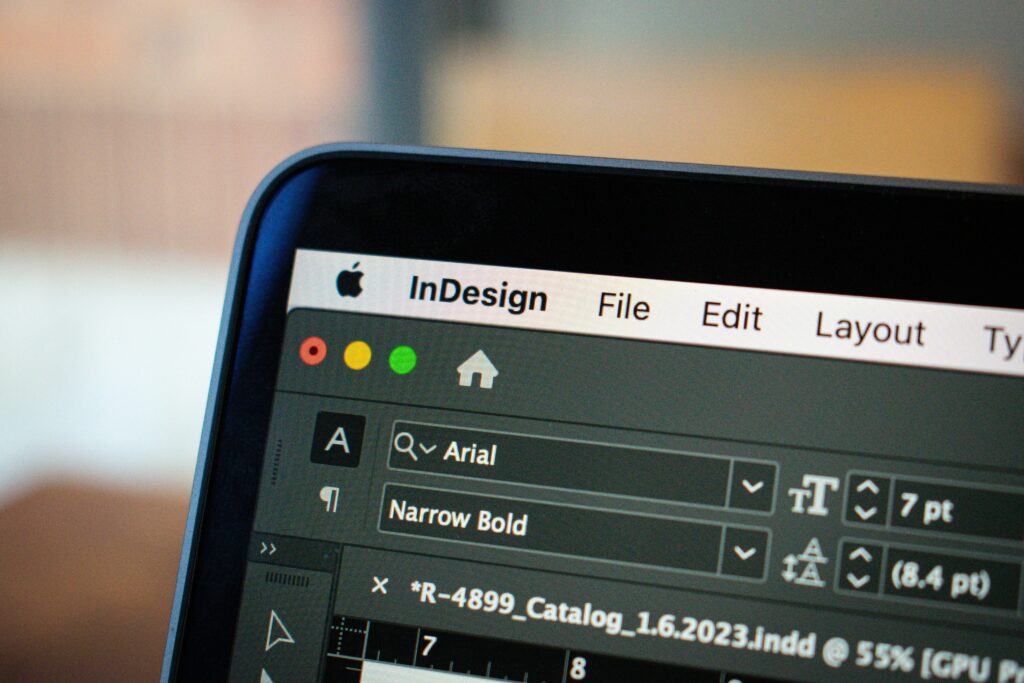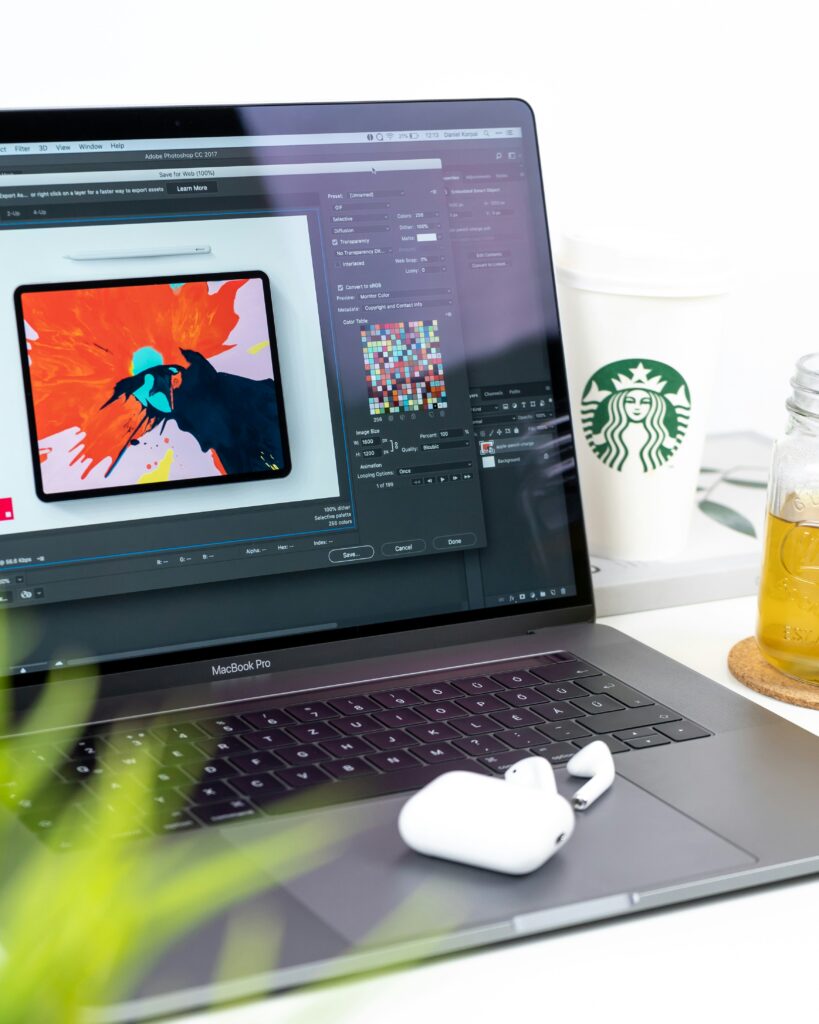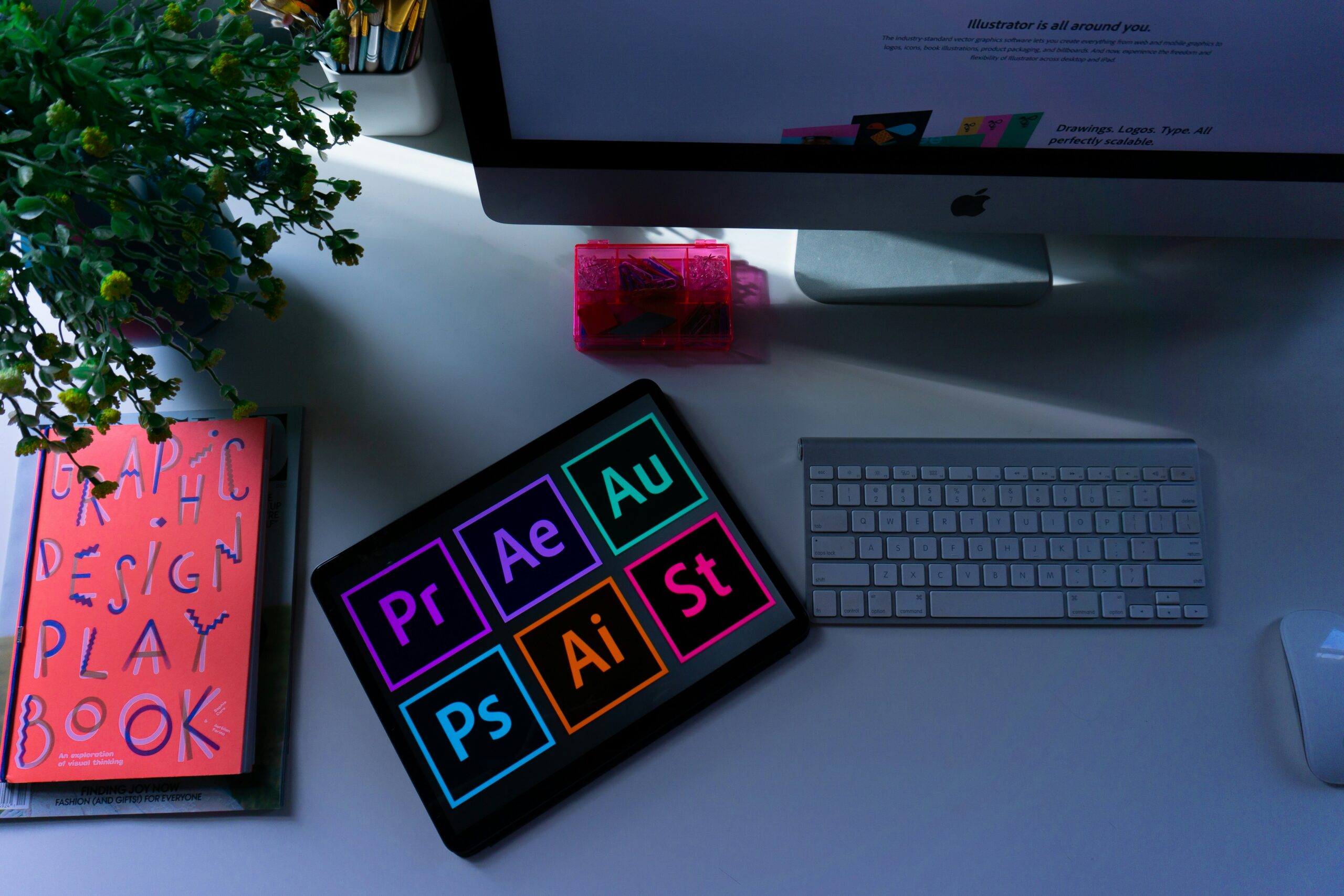The short answer is: Adobe Illustrator. Adobe Creative Cloud is the industry standard for design software and if you look at any graphic design job description, they’re going to expect you to have experience with Adobe Creative Cloud, specifically Illustrator, InDesign, and Photoshop.
The longer answer is: there are a few great options, depending on where you’re at with design experience and budget.
Adobe Illustrator
Adobe has set the standard for years. The most common softwares I use on a regular basis to create my designs are Illustrator, InDesign, and Photoshop.
Illustrator is a vector graphics design software and allows you the freedom to create whatever you can think up. Your imagination is the limit. I use it to create custom logos and graphics. I use it for Instagram carousels because I can have the art boards right next to each other. Sometimes I’ll use it for layouts, but it’s primarily used for creating custom graphics.

Photo by Iyus sugiharto on Unsplash.
As I mentioned above, Illustrator is a vector graphics program. A vector graphic is a graphic that can be scaled larger or smaller, to any degree, without losing any quality. Unlike image files, which are raster, and we’ll address that momentarily.
Adobe InDesign
InDesign is a layout and publication program. I used it at a previous job as my primary design software, creating ads, business cards, and postcards and such. But where it would really shine was when I was working on magazines and multi-page projects. It has some of the same tools as illustrator, so it IS possible to create some graphics in there, but it’s nowhere near as robust in that regard as Illustrator. And graphics from Illustrator can easily be copy/pasted or imported into InDesign.

Photo by Kelsey Todd on Unsplash
Adobe Photoshop
Some designers really love designing things within Photoshop. Personally, I think that Photoshop is much better suited to its original intended purpose – photo manipulation. It’s also great for digital painting – I created many paintings in there back when I was studying game art. The biggest things I use Photoshop for as a brand designer, though, are mockups. To be able to place branding and visualize designs on virtually anything is an extremely valuable asset in any designer’s wheelhouse.
Having mockups for things like business cards, merchandise, or packaging is the difference between just showing a client their brand visuals and allowing them to see how their branding looks in the real world. Even if it doesn’t actually exist yet. While it’s not specifically a design software, it is a primary program used by designers everywhere.

Photo by Daniel Korpai on Unsplash
Adobe is the industry standard for design software. And they have so many programs for creatives. Are you a video editor? Premiere Pro is your go-to. Need to create some motion graphics? Check out After Effects. Are you a 3D Artist? Adobe acquired Allegorithmic in 2019 and they now have a subscription just for the Substance 3D suite of softwares. This post from Adobe is a great source to help you choose the best program for your design project, between Illustrator, InDesign, and Photoshop.
The biggest drawback to Adobe is the price. Their pricing is on a subscription model and their subscriptions are expensive. Because of that, they may not be the best option for everyone. For example, if you’re a hobbyist designer and don’t want to pay $23/month for a single app, there are other low cost, or even free, options.
Affinity Suite
Adobe may be the industry standard, but it is far from the only option.
Affinity is a smaller suite of programs that focuses only on graphic design. These programs are for photo editing, vector graphics, and layout and publishing. There are direct comparisons here between Affinity Photo and Photoshop, Affinity Designer and Illustrator, and Affinity Publisher and InDesign.
To start off with the pricing structure, Affinity programs are priced on a one-time purchase model, which to be completely honest, I am way more on board with than subscription models. I have only ever used Adobe for my design work, but everything that I’ve heard and read about the Affinity programs make them a solid choice for design software, depending on your needs. If you only ever need to use Photo, Designer, and Publisher, then you’re set. If you need to do video, motion graphics, or 3D, you may need to consider Adobe or some different programs.
A significant difference between Affinity Designer and Adobe Illustrator is that Affinity Designer allows for a more comfortable “drawing” experience, whereas Illustrator is primarily clicking and dragging.

Affinity programs integrate seamlessly with each other, and don’t have as steep of a learning curve as Adobe programs do, but they may not have all of the features needed for certain projects. There are some functional differences, but feature for feature, they can go toe to toe with Adobe’s three primary graphic design programs. However, their mobile apps are better able to stand on their own than the Adobe CC apps, which act more as supplements to the full Creative Cloud suite. I’ve tried using the Illustrator iPad app and I found it to be pretty clunky, to the point that I haven’t messed with it much beyond my initial 10-15 minutes of trying to design without my computer.
Free (or cheap) Alternatives
If you can’t make a financial investment into a program that you’re not even sure you’d want to continue using, there are free or cheaper alternatives to these programs. The biggest one that you’ve likely already heard of by now is Canva. Canva is an excellent tool for both beginners and experts alike. I use Canva to provide clients with editable branded templates as part of my offboarding process. Others use it only for layouts. One of my clients a few years back wanted me to use Canva to lay out their pharmaceutical coloring book (which was a blast – I learned a lot about common drugs while doing that project). Some designers use assets in Canva to create completely custom graphics, as a challenge.
One of the most common things I see from designers who only use Canva, though, is that they use pre-existing content in their designs and claim it as their own – because they created the design. But not the assets used. For example, logos created in Canva using pre-existing content cannot be trademarked. In order to legally be able to trademark a logo created in Canva, the designer needs to completely create the design from scratch with basic shapes and lines, or upload custom graphics that they created or commissioned from another designer, which they have legal rights to use.
Canva licensing can be a point of confusion for a lot of users, so I’ll link it here, so that you have all of the information you need if you’re planning to use Canva for anything other than personal work.
There are also programs such as Inkscape, Gimp, Figma, and Scribus that are solid free alternatives to the Adobe Programs that I talked about earlier.
So which design software is best?
It very largely depends on your needs and budget, if you’re looking to get into any of them. But strictly speaking to quantity and quality of features, Adobe CC wins that race.
If you know that you need branding and a website, but find the idea of these programs to be daunting, reach out and let’s chat about what you’re looking for! DIY has its place, but when you’re investing your whole self into your business, there’s too much at stake for things to not be done right and there’s absolutely no shame in hiring an expert to do something for you.
